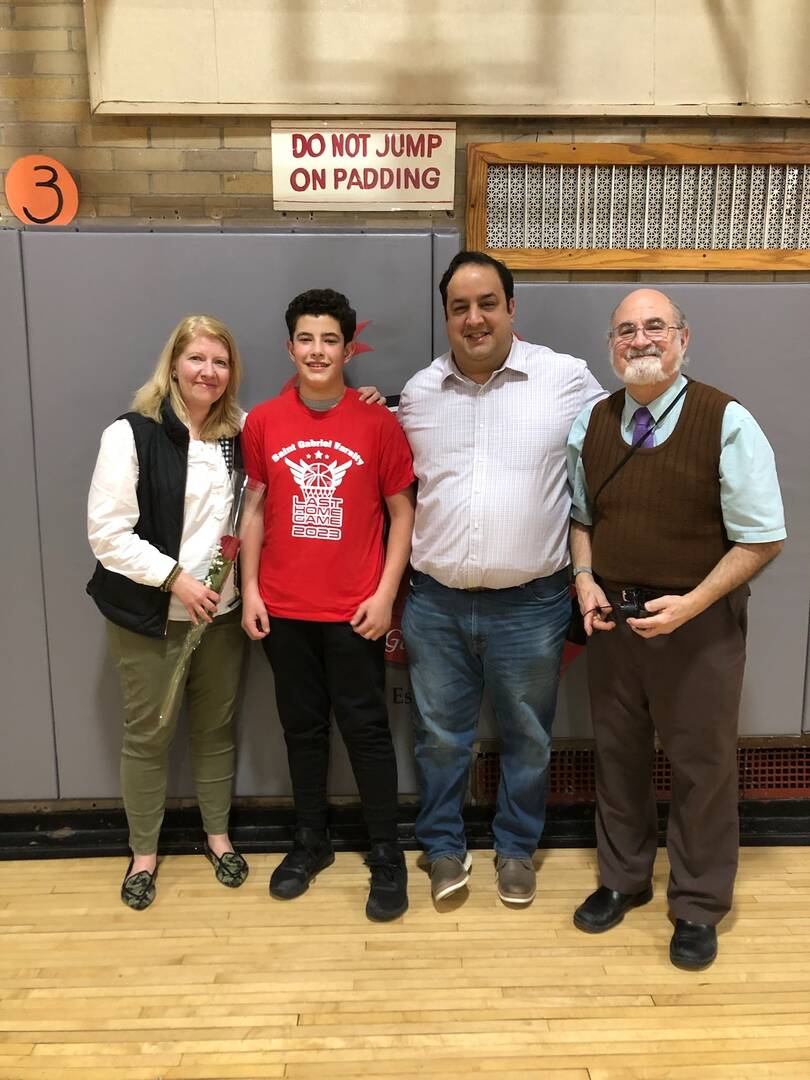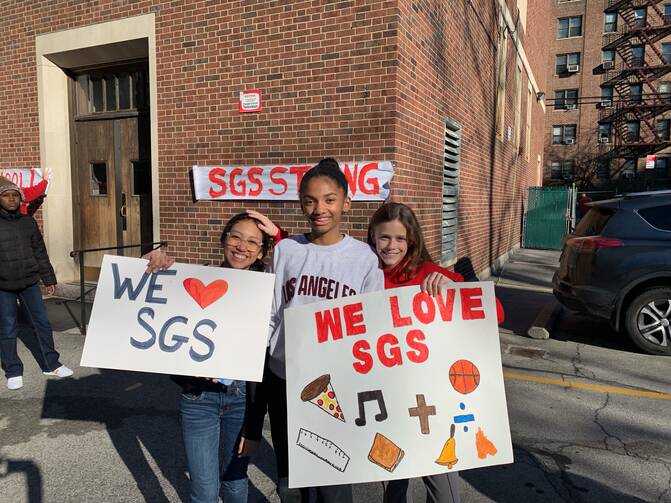My Catholic grammar school is closing. Is our church dying or being reborn?
What I will remember most are the pads on the gym wall.
If you graduated from St. Gabriel’s School in the Riverdale section of the Bronx, you know exactly what I am talking about. For those who have not had the privilege, an explanation is in order.
The St. Gabriel’s gym, where I attended many basketball games, a few school graduations and the occasional Mass, is not, properly speaking, a gym. To be precise, it is not large enough to accommodate a standard basketball court. The court’s boundaries run perilously close to the walls beneath each basket, which is why some wise soul installed foam pads on the walls. I assume the sign came later. It reads: “Do not jump on padding.”
The warning, as you might have guessed, was sometimes ignored.
Is it my role to serve as witness to the death of something? Or should I be forging ahead to create something new?
I share this bit of New York Catholic school trivia because St. Gabriel’s is closing this month after 80 years of service to South Riverdale, a neighborhood that sits just north of the Henry Hudson Bridge connecting Manhattan and the Bronx. It is one of 12 Catholic schools that are closing in the Archdiocese of New York.
We also recently learned that the Sisters of Charity of New York, who taught for many years at St. Gabriel’s and who were there in force when my father graduated in 1955, have recently decided to stop accepting new members, thus beginning their “path to completion.”
So this is an essay about endings. But first, let’s go back to the beginning.
An Ad Hoc Church
St. Gabriel’s School was founded in 1941, shortly after the Henry Hudson Bridge was built, bringing more housing, and more Catholics, to the neighborhood. Before that time, the neighborhood was largely known for the tuberculosis hospital that sat on a hill looking west toward the Hudson River, named after St. Elizabeth Ann Seton. The school was built first, with a church on the first floor. The plan, from what I understand, was to build a larger church in the lot next door. But that never happened, which is why the church retains an ad hoc flavor. To enter, you have to walk down a few steps. The altar sits at the crux of an el-shaped sanctuary and faces a set of large sliding doors that open up into the gym.
My grandfather moved into the neighborhood in 1940 or so, around the time he was married. He grew up near Fordham Road, and I imagine the tree-lined streets of Riverdale appealed to him. Fifteen years later, he bought some land on the other side of the highway, and there he stayed until his death. My father lived there, too, for most of his life and graduated from St. Gabriel’s in 1955. There was no question where I would go to school when he moved back to the area in 1980.

I graduated in 1989. My nephew, a member of the last class, graduated this spring. Much remains unchanged. The classrooms look largely the same, and recess is still a raucous affair played out in the large parking lot next door. Annual rituals continued with reassuring familiarity: the car wash fundraiser, the 24-hour basketball marathon, Friday nights in the gym and holy days of obligation observed at a weekday morning Mass. Save for the post-Vatican II vibe of the church itself, it could be 1955 on West 235 Street and Netherland Avenue.
But change was happening, if you looked close enough. Class sizes waxed and waned. More students began coming from outside the neighborhood. And the Sisters of Charity left the school many years ago.
Officially, St. Gabriel’s is merging with a school just to the north, St. Margaret of Cortona. I imagine some students will make the move, but many will not. And some teachers will lose their jobs. As you can imagine, people are sad and angry, including members of my family. This is entirely understandable. The closing of a school or a church is like a death, and we should not pretend otherwise. It is not something I ever imagined happening when I was a student, when Catholic culture in New York was thick.
A Hinge of History
The older I grow, the more I begin to reflect on what it means to live at this hinge point in U.S. Catholic history. It seems to be the lot of my generation—born after the Second Vatican Council, old enough to feel the brunt force of the sexual abuse crisis—to be part of a church forever in transition. Is it our role to serve as witness to the death of something: a church, a school, a religious order? Or should we instead be the ones forging ahead to create something new?
I suspect that this may be an easier question for millennials or Gen Z to answer. They are young enough—and bold enough—to want to look forward and not backward. But it is more difficult for those who have deep ties to the way things used to be. I feel torn between a desire to honor the places that formed me and the need to try to find a new way to be Catholic in the 21st century.
Pope Francis has said that we are living through “not an era of change, but a change of era.”
Pope Francis has said that we are living through “not an era of change, but a change of era.” The historian John McGreevy quotes this line in his new book, Catholicism: A Global History From the French Revolution to Pope Francis. Reading McGreevy, it becomes apparent that the church, at least in the West, is reaching the end of an age of religious fervor that began in the 18th century and stretched all the way to Vatican II. It is a story that began in villages of France after the revolution and was still playing out in the Bronx two centuries later. It is an inspiring tale. I just don’t know what I think about living at the end of it. Sometimes it feels like our church is disappearing one parish or school or congregation at a time.
Back to the St. Gabe’s gym. That awkward space is the source of many happy memories. Here’s one: Msgr. John Doherty stands in the stairwell, taking in the crowd with a smile. One of the class mothers sits behind a folding table by the entrance, selling tickets. The buzzer (always too loud) brings an end to the second quarter. The teams march off to the locker room (which is actually a kitchen) for halftime. There’s no beer to be had, but hot dogs are only a dollar.


No comments:
Post a Comment